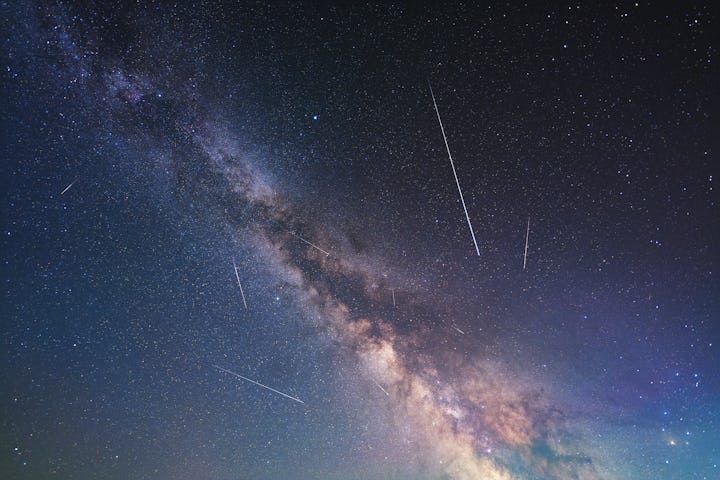The Perseids Meteor Shower Is Coming — Here's How To Get A Front Row Seat
There is still some good planning time if you want to ensure you and the kids have the best view to catch the Perseids.

For families that love to stargaze, there’s a particularly spectacular summer meteor shower — the Perseids — that is just about to peak. If you just want to try to catch it from your backyard, that’s totally fine — especially if you want to be able to tuck the kids back to bed after a few hours of summer night or early morning stargazing. But if you want to make an event of it, there’s still time to plan if you want to catch the Perseids at their best, in a dark sky environment. Here’s everything you need to know about the Perseids — and how to see them.
What are the Perseids?
The Perseids happen every year, typically from mid-July into late August. The Perseids are often called the best meteor shower of the year because there are so many meteors shooting through the sky. This year, the Perseid meteor shower will be active from mid-July to August 24.
According to Space.com, the Perseids are “caused by Earth passing through debris — bits of ice and rock — left behind by Comet Swift-Tuttle, which last passed close to Earth in 1992.”
In a typical year, you can expect to see around 100 meteors shoot through the sky each hour, but this year will be different.
When will the Perseids peak?
This year, the Perseids will peak around Aug. 13, 2023, according to In The Sky.
“The shower is expected to reach peak activity at around 04:00 EDT on 13 August 2023, and so the best displays might be seen before dawn on 13 August,” the site notes.
Why is this summer’s Perseids going to be spectacular?
To be able to see meteor showers, the darker the sky, the more meteors you will be able to see. And that’s why this year’s is going to be so good — because the moon isn’t going to be super bright (like it was last year), meaning the moon won’t interfere with the meteor shower. You’ll be able to see more of them than you could last year.
“The moon will hardly interfere with the peak at all, being just a slender crescent in the predawn morning sky and second, the core of this meteor stream is expected to interact with the Earth during the morning hours of August 13 for North America,” Space.com reports.
How best to view the Perseids
Watching the Perseids doesn’t take a lot of equipment or anything special if you live in the Northern Hemisphere, which is why it’s fun to watch with the kids. All you need to do is find the location with the darkest sky possible — away from city lights or street lamps.
“You don't need any telescopes or binoculars as the secret is to take in as much sky as possible,” Space.com notes, “and allow about 30 minutes for your eyes to adjust to the dark.”
Want to go all in? There’s still time to plan a trip to a Dark Sky Reserve or a National Park.
Since we have about a month until the peak of the shower, there is plenty of time to go all in if you want to see the Perseids with the kids in an extra-spectacular place — maybe as your last summer vacation? It might not be too late to plan a trip out to a dark sky reserve or check out a light pollution map – like DarkSiteFinder — to locate where the best local spot to watch the sky.
The National Park Service also built out a list of parks that are great for stargazing — and some of them are certified dark sky reserves, too. If they’re not too far from home, you might be able to build a last-minute camping trip around the shower. And if that doesn’t work out, your backyard is always a magical place for some backyard camping.
This article was originally published on